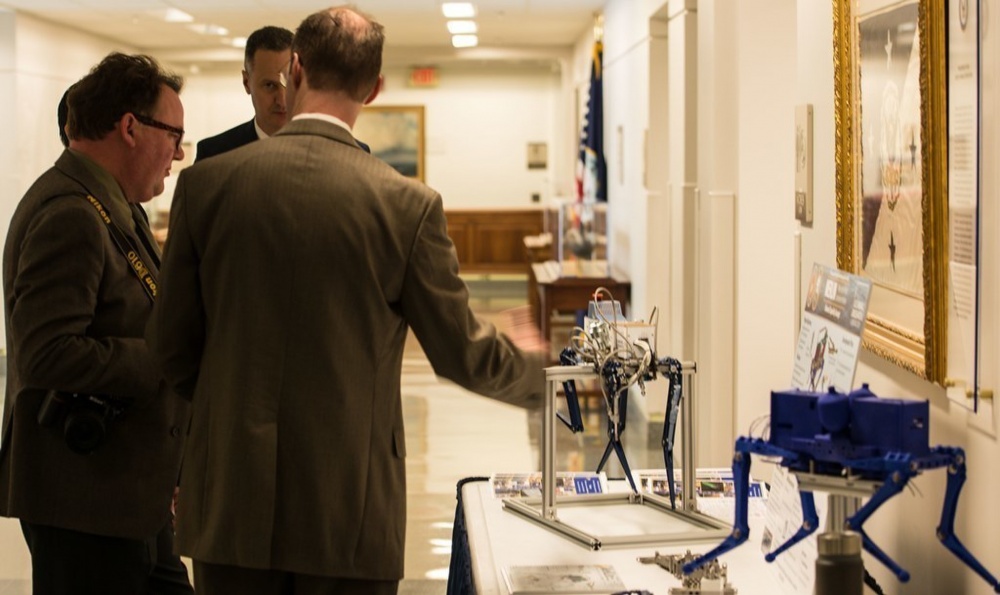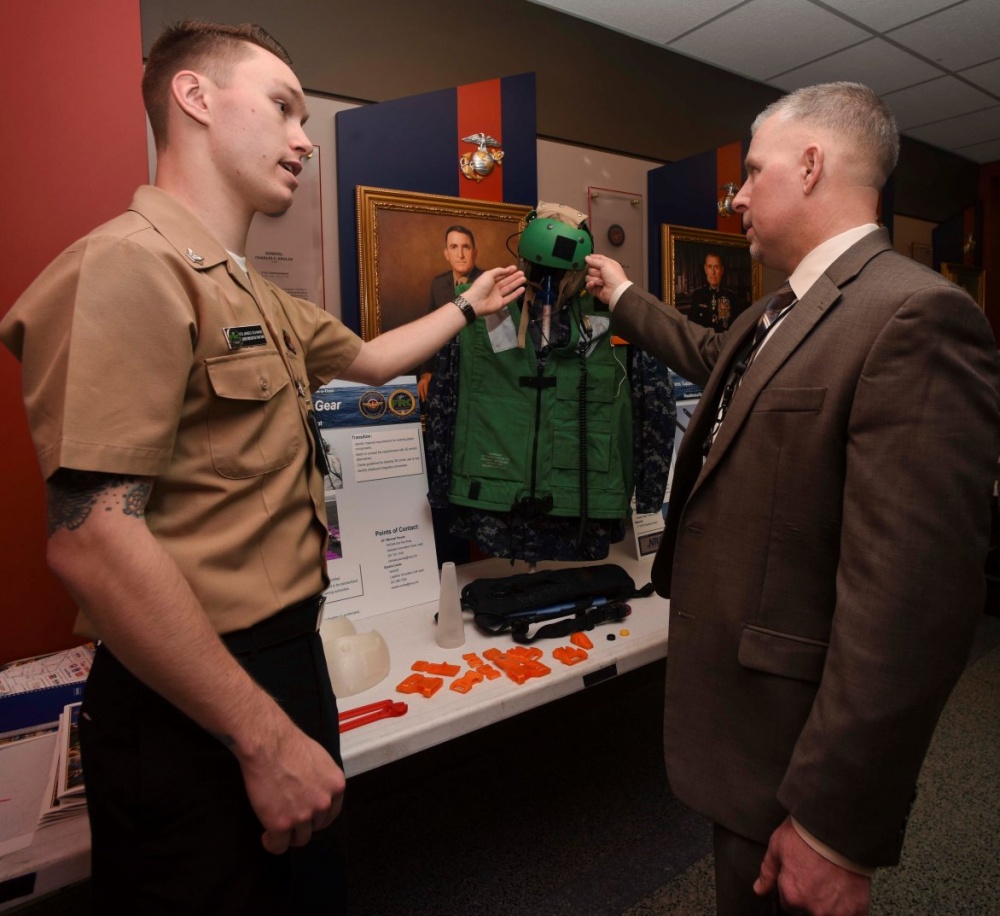The US Department of the Navy (DoN) based in the The Pentagon, has held a 3D Print-a-Thon to display innovative use of the technology. The 2017 event took place on the 15th March and saw 40 3D printing projects presented from over 20 different Navy and Marine Corps organizations.
Example objects include, “Explosive charges, fuel cells, sonobuoys, shipboard antennas, customized propellers, sensors, and valves” showing potential for how 3D printing such parts can save money and drastically reduce lead times. These aspects are of particular importance when working at sea, especially considering the potential of having a mobile fabrication laboratory.

Game-changing technology
The event’s keynote speaker was Dr. John Burrow, who is deputy assistant secretary of the Navy for research, development, test and evaluation (DASN RDT&E). He referred to 3D printing as, “a potential game-changing technology for naval warfare” explaining that,
It accelerates capability development and will increase our readiness by reducing obsolescence or long lead time issues. It also enables a new design space that allows for component or platform characteristics not possible through legacy manufacturing methods.
Earlier in March 2017, the US Navy’s Fleet Readiness Center Southeast (FRCSE) demonstrated this potential in 3D printing its first aircraft component.

3D printed cooling fans
At the Mobile Fab Lab in the Navy’s Southeast Regional Mantainence Center, a team of repairmen have used 3D printing to make cooling fans. Senior Chief Machinery Repairman Sean Boykin presented this project at the 3D Print-a-Thon.
Boykin noted that the team were able to reduce costs down to $1.39 per fan, opposed to the usual cost of $375. This substantial saving led to 3D printed designs that could be certified for wider fleet use.
Boykin, who also manages the Mobile Fabrication Lab at the Southeast Regional Maintenance Center, says, “It was exciting to see how the other commands and warfare centers are utilizing additive manufacturing in innovative ways.”

Metal machines
Dr. Ben Gould, a Naval Research Laboratory (NRL) chemical engineer, says that the Pentagon’s 3D Print-a-Thon proved to be a good networking event. The NRL has taken particular note of 3D metal printing equipment and is expecting the delivery of an a Concept Laser M2 Cusing machine for stainless steel research purposes.
Dr. Gould also comments,
It’s a very exciting time to be a DoD (Department of Defense) scientist or engineer because the design freedom that 3D printing provides is incredible and is really only limited by your imagination.
Remember to vote in the 3D Printing Industry Awards.
For the latest 3D printing news, follow us on twitter and sign up to our newsletter.
Featured image shows Naval Aircraft Carriers. Photo via the US Navy.



